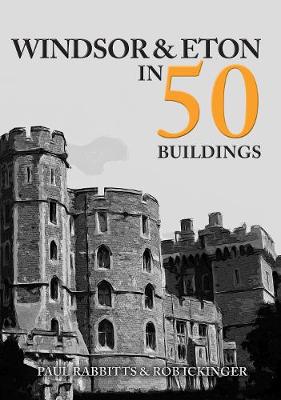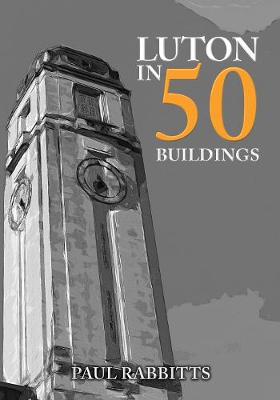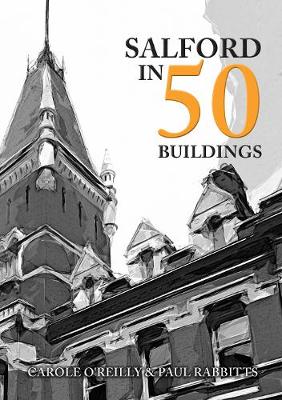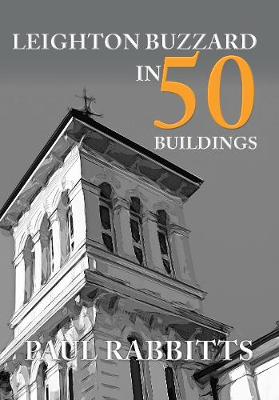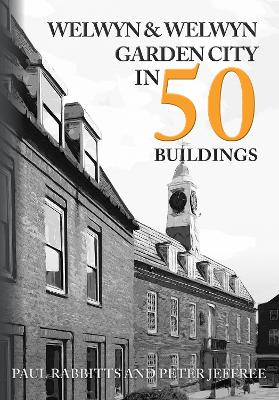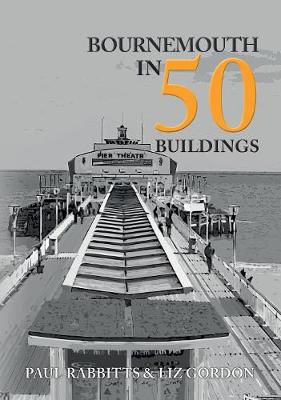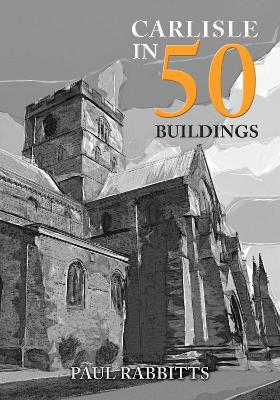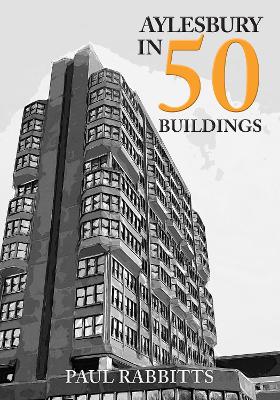In 50 Buildings
11 total works
In Windsor & Eton in 50 Buildings, authors Paul Rabbitts and Rob Ickinger takes readers on an engaging tour to discover fifty buildings and landmarks that capture the immense heritage of the towns, and to show how they have developed across the centuries. Among the places featured are Windsor's Guildhall and the charming seventeenth-century Crooked House.
In this book, authors Paul Rabbitts and Liz Gordon take the reader on an engaging tour of Salisbury's landmarks and significant buildings from across the centuries. Here are the structures that reveal the history of the town, showing how it developed and telling the story of its people and their way of life. The wide range of structures included range from the cathedral to bridges, almshouses to inns, and cinemas to townhouses. Illustrated throughout, this broad and accessible perspective of Salisbury's architectural heritage will interest residents and visitors alike.
In Luton in 50 Buildings author Paul Rabbitts looks at how the town's buildings and landmarks, both old and new, reflect its long and fascinating history. Among the places featured are some of the town's historic churches, inns and residences, the town hall and the Kenilworth Road football ground. Also featured are Luton Central Mosque, the expanding airport and the stately home of Luton Hoo, originally designed by Robert Adam in the eighteenth century for the 3rd Earl of Bute. Each of these structures and landmarks has its own stories to tell, as well as documenting a significant aspect of Luton's social, cultural and industrial heritage.
In Salford in 50 Buildings, authors Carole O'Reilly and Paul Rabbitts uncover fifty of the city's architectural treasures and landmarks from across the centuries. These are the places that reflect the city's history and tell the stories of its people and their way of life. Among those featured are university buildings, the cathedral, Irlam railway station, Worsley Old Hall, Ordsall Hall, together with schools, shops, pubs and churches. Each one chronicles a fascinating aspect of the city's cultural, social and industrial heritage.
From urban buzz to greenbelt tranquillity, Salford is building on the mixture of its waterfront, urban and countryside environments to create places where people want to live, work, invest and visit. Its modern structures reflect this change including iconic buildings such as the Lowry Theatre and Salford Quays. The city celebrates its Victorian heritage as well as embracing the future with stunning new architecture.
Today, Leighton Buzzard is linked to the town of Linslade by a bridge over the River Ouzel. The two communities were unified as a civil parish in 1965 and are commonly referred to as Leighton-Linslade. Looking back through the centuries, there is evidence that people have been living in and around the area since Saxon times. In the Domesday Book Leighton Buzzard was called Lestone and there was reference to its market which still takes place to this day.
In this book author Paul Rabbitts explores fifty of the town's most interesting, important and intriguing buildings and structures, from inns to churches and schools to houses. The town boasts many old buildings, each with their own story to tell that, together, make up the fascinating history of Leighton Buzzard.
Welwyn & Welwyn Garden City in 50 Buildings
by Paul Rabbitts and Peter Jeffree
Welwyn Garden City's historic significance in town and social planning is global, attracting study and visits from tourists and representatives of civic organisations from abroad. It became one of the UK's first new towns in 1948 and its success led to the creation of towns including Harlow, Stevenage and Milton Keynes. Over the decades, it has grown in size and many residents now commute to London and elsewhere. Increasing car usage and other social changes mean that Ebenezer Howard's vision has had to adapt to the demands of modern living.
In this book Paul Rabbitts and Peter Jeffree highlight a wide range of buildings and structures that reveal the history and development of Welwyn and its Garden City neighbour. The latter features one of the finest collections of English domestic architecture of the early twentieth century.
Illustrated throughout, Welwyn & Welwyn Garden City in 50 Buildings will appeal to residents, visitors and those interested in the garden city movement.
In Bournemouth in 50 Buildings, authors Paul Rabbitts and Liz Gordon highlight the town's significant architectural landmarks from across the centuries. Through a fascinating and diverse selection of buildings they tell the story of the town's development, its people and their way of life. Among the places they focus on are churches, hotels, inns, houses, cinemas and educational establishments. The scope of buildings the authors have selected is incredibly wide - ranging from the grand to the modest - and many different architectural styles are featured. Readers will discover everything from beach huts and Boscombe Pier, to the Russell-Cotes Art Gallery and Museum together with modern office blocks and workplaces. Bournemouth in 50 Buildings offers an engaging and valuable historical perspective on the town.
In the Domesday Book there is no mention of Watford. The area of the current town and the land around it belonged to the abbot's manor of Cashio (later Cassio) and it continued to be controlled by the abbot until the sixteenth century. A few buildings remain from this period. Other gems are Monmouth House from the seventeeth century; the Free School, Frogmore House, Benskin House (now Watford Museum), Little Cassiobury and Russells from the eighteenth century; and some of the High Street shops. In this book Paul Rabbitts and Peter Jeffree highlight fifty buildings spanning the centuries that reveal Watford's rich architectural history and tell the story of the changing face of this Hertfordshire town.
In Carlisle in 50 Buildings author Paul Rabbitts explores fifty of the city's architectural landmarks to discover its history, development and the changing way of life for its people. Both ancient and modern structures are featured, which have been used for many different purposes and reflect a wide range of architectural styles. The city's success is based on its industry, which has shaped its built environment together with the many historic buildings and new structures. All these are celebrated within this well-illustrated book. This engaging and accessible portrait of the city's rich history and its architectural heritage will appeal to residents and visitors alike.
In this book, author Paul Rabbitts features 50 of the buildings and landmarks in the town to reveal the structures that are testament to the history and development of Aylesbury. The chosen buildings are drawn from right across the centuries and reflect diverse architectural styles and purposes from educational and entertainment to residential and religious and many more. By exploring Aylesbury’s architectural heritage in an engaging and accessible way, the author charts the changing face of the town and the places that have played a significant or surprising role in its history.
Illustrated throughout, ‘Aylesbury in 50 Buildings’ will be of great interest to residents, visitors and local historians.
